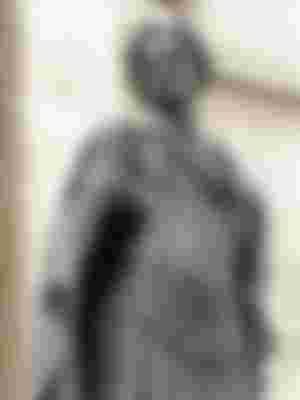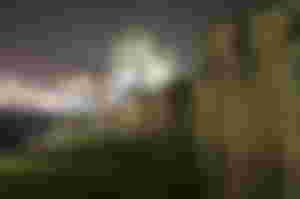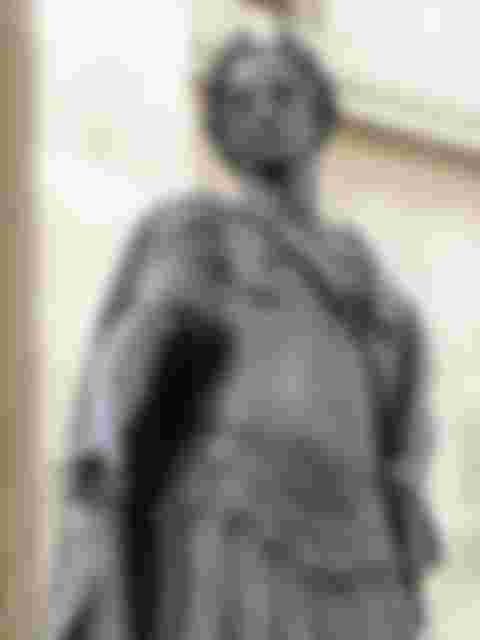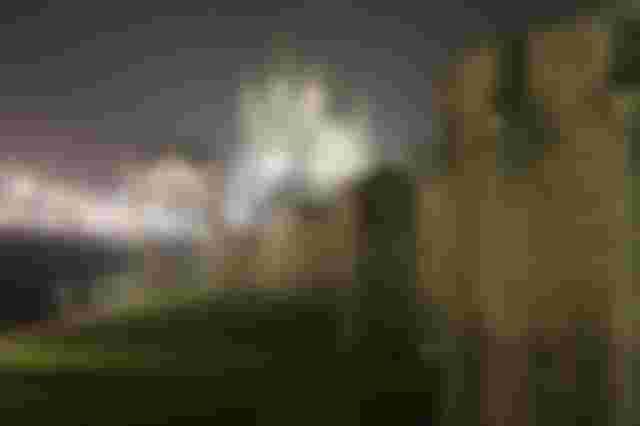Roman London

The Londinium of the Romans was what we should call a garrison town.
A fortress on the site of the Tower marked its eastern limit, and Ludgate its western; while the river bounded it on the south, and, roughly speaking, London Wall on the north.
It was for the most part built of wood, and for some time possessed no structure of any magnitude; but no sooner was Britain thoroughly subjugated, than the arts and refinements of Rome began to influence the new colony.
Roads intersected the island in every direction; rivers were embanked; causeways were thrown over marshes; fens were drained, and settlements formed; so that when the Romans finally departed, they left behind them fifty walled and flourishing cities, of which Londinium was, if not the chief, one of very great importance.
Gradually it developed from a camp of defense into a substantially-built city with every convenience for its extensive commerce.
But as neither columns, architraves, nor other fragments of architectural grandeur have been disinterred, we conclude it was never, like Pompeii, a replica in miniature of the Empire's great capital, with public buildings, theatres, baths, temples, and stately palaces on every side.
After the lapse of 1500 years, there are hardly any remains of this Roman London to be seen in situ above ground.
London Stone
The chief amongst them is, perhaps, London Stone, fixed into the wall of St. Swithin's church, and facing the Cannon Street terminus of the South-Eastern Railway.
From the milliarium, of which it is a fragment, radiated splendid highways to Dover, Carlisle, and Lincoln, carried, with imperious disdain of every natural impediment, over hill and dale, bog and river; roads so well constructed that in many places they still survive.
As we touch this stone, although we cannot, like Jack Cade, exclaim, "Now is Mortimer lord of this city," we may, at least, innocently boast of having handled one of the oldest relics of Roman sway to be found in London.
More difficult to get at are the Roman portions of the walls that encircled London; for only their foundations, discernible here and there, built of square stones and bricks bedded in adamantine mortar, are original; the upper part having been restored with mixed material at a much later date.
These walls were twenty feet high, and the towers forty feet; but their entire circuit was only a trifle over two miles, enclosing an area of 380 acres.
To see a bit of this Roman work easily, go up old Broad Street from the Bank, and turn to the left opposite Wormwood Street, into London Wall.
Immediately on the right is a quaint little church, Allhallows-in-the-Wall, where, at the back of its burial ground, close to the church door, is a masonry fragment, probably Roman.
Further along London Wall, at the Wood Street end, is another churchyard (that of St. Alphage), closed by Act of Parliament in 1872, and laid out as a garden, where, shaded by two plane-trees, is another section of the old wall.
But the most perfect relics of both wall and bastions are to be found in the shady churchyard of St. Giles', Cripplegate.
Shut in by lofty warehouses, the roar of ceaseless traffic left behind, this is to the antiquarian or philosopher one of the most attractive nooks in the city.
In Chamomile Street, off Bishopsgate, a little way down on the left, in a forlorn slip of burial-ground belonging to St. Martin's Outwich, is a bit of the city wall, where in the lower courses lurks a suspicion of Roman work.
Tower of London

Then inside the Tower of London, on the eastern side of the White Tower, railed off, and only shown by special order, is a fine piece of Roman wall, which is in a line with another bit visible in Trinity Place, off little Tower Hill, adjacent to the George Hotel, where the foundations can be partly traced.
(In 1900 the Roman wall cropped up in the Old Bailey, running apparently in the direction of Newgate Street on the one hand, and Ludgate on the other. The specimen was in a splendid state of preservation.)
Roman Bath
Going westward along the Strand, still thinking about the Romans, we may notice opposite Newcastle Street on our left a narrow alley, Strand Lane, which formerly led to one of the numerous landing-stairs along the river.
Here is a Roman bath (so-called), built of thin bricks such as we find at the base of the city wall.
There is no doubt about its antiquity, but it can be inspected by the public on Saturdays only, from eleven to twelve o'clock.
Its use as a bath, however, is restricted to annual subscribers, while the drinking-fountain, formerly attached to it, whose clear cold water was derived from the same source (tradition says, the well of St. Clement in Wych Street), has been done away with.
If it were indeed a Roman bath, it probably belonged to the suburban villa of some wealthy merchant or leading official; and many a Julia or Poppea may have laved her shapely limbs in this rough stuccoed cistern, thinking regretfully of the luxuries of the Empire's capital.
For other relics of the Roman occupation of London we must seek below the present surface.
Oliver Wendell Holmes, recording his impressions of the Bath and its antiquities, remarks, "What surprises me all over the Old World is to see how deeply all the old civilizations contrive to get buried. Everybody seems to have lived in the cellar."
But the Romans were no troglodytes.
The contracted site of Roman London has for eighteen centuries been densely built upon, and the ruins of one town have been utilized for the foundations of its successor.
This process has so elevated the ground, that Cheapside is now on about the same plane as the ancient housetops; and to reach the original level of Londinium, we should have to pare away a layer of artificial soil some twenty-five to thirty feet thick, with its buildings and complicated system of sewers and mains.
At this depth, all over the city, and often beyond, have been discovered relics of our highly civilized conquerors, and the Thames bed doubtless holds rich stores, judging from the samples that have been dredged up.
Many of these "finds" used to be lost through the carelessness and ignorance of the labourers, who cast aside all that was not coin or precious metal.
But times are changed, and clerks of works and foremen keep a sharp look-out for anything in the way of antiquities.
We naturally think of the Anglo-Roman room in the British Museum as the best place to look for such a collection.
But the objects shown there have not been drawn from London alone, but from all parts of the country; besides which, they require rather too much scientific knowledge for the ordinary visitor's appreciation.
Where then must he go?
With the promptitude that characterized Sam Weller's reply to Mr. Pickwick, who asked where he could get a glass of brandy-and-water warm after his stormy interview with Messrs. Dodson and Fogg, I say that the Corporation Museum at Guildhall is the place to study Roman relics.
Here are tesselated pavements, altars, images of pagan deities, and statuettes.
Then there are fragments unearthed from below the Royal Exchange, such as scraps of leather, shards, bits of glass, iron, and other rubbish, indicating the existence of some primitive dust-bin.
Classified, and arranged in cases, are vases, urns, terra-cotta lamps such as might have been carried by the wise and foolish virgins of the parable; writing-tablets and styles in various materials; coins of silver, brass, and copper; rings, necklaces, ear-rings, and bodkins; lethal weapons of iron; Samian ware with the potter's mark fresh as when it left his wheel; and amphorae, whose contents have long since been poured out in libations to Bacchus, Mars, or Diana, or to the dead.
From funeral urns and graves have come those strange little crystal bottles known as lachrymatories or tear-flasks, but which were in reality filled with perfume and placed inside the tomb wherein sometimes slept husband, wife, and child in loving contiguity.
There are sandals, the soliae or slippers used only in the house, the calcei or out-of-door shoe, and the rough and serviceable foot-gear of the soldier.
Truly there is nothing like leather, nothing that more obstinately seems to resist the ravages of time; and the Romans, wherever they pitched their camp in Britain, appear to have left behind them an assortment of old boots.
These dainty little sandals - "threes" they look like - were perhaps worn by the charming daughter of some colossus of the money-market, whose own "tens," hardly worn down at all, repose in the same cabinet.
In them he may have trodden the pavement of the market-place or forum, watched by the smaller commercial fry, while he pondered some "corner" in wheat or tin.
But one may spend hours here in trying to realize what sort of people used the objects around us.
Will Macaulay's New Zealander indulge in similar contemplation concerning the relics of Victorian London two thousand years hence? Quien sabe!
Arthur Henry Beavan, 1901

